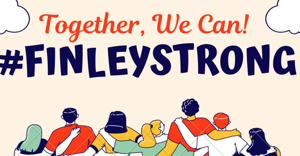
Due to disproportionate numbers of indigenous women either murdered or missing, the question may be why is this happening to indigenous women so much? Every epidemic begins somewhere and this goes back centuries. One of the answers that has planted the seeds of this epidemic, generational trauma and the history behind it.
“My family survived the American Genocide but my mom didn’t survive this.” said Carolyn DeFord, daughter of Leonna Kinsey, a Puyallap woman who has been missing for 22 years.
This genocide is what scholars define as the murder of thousands of indigenous people during the beginning foundations of American history.
This beginning dawns back to Christopher Columbus’s voyage to India, who landed in the Americas. In the decades to follow, Native Americans in North America decreased by 95% from when Columbus came to America in 1492 and the establishment of the United States in 1776 according to the book, Understanding Prejudice and Discrimination (Plous, 2003).
This decline happened when Natives were overwhelmingly killed by diseases brought by the settlers like smallpox, measles, and cholera. Some of it was unintentional, while some of it was intentional.
According to “Multicultural Counseling: Context, theory and practice, and competence” unintentionality and intentionality varies between the intentional killing of Native Americans and the exposure of Native Americans to European diseases (Trusty, Looby, & Sandhu, 2002). Much of the Native American population died due to its lack of resistance to “diseases such as smallpox, diphtheria, measles, and cholera” that Europeans brought to North America (Trusty et al., 2002, p. 7).
While some of the exposure to these illnesses was actually unintentional, it has been documented that many times the Native American people were purposely exposed to said diseases. Understanding Prejudice and Discrimination states that in 1763 for instance, Lord Jeffrey Amherst ordered his subordinates to introduce smallpox to the Native American people through blankets offered to them (Plous, 2003).
The intentional killing of Native American peoples has been a phenomena existing then up until now. In 2018, Seattle’s Urban Indian Health Institute proved murder is the third leading cause of death among native women. They also found that thousands of missing native women had gone unreported. Additionally, according to Cultural Survival, indigenous women are ten times more likely to be assaulted or abused.
“I was just always in an uproar, always fighting something and I just didn’t know what it was.” said Deborah Maytubee Shipman, activist, scholar, and founder of MMIW USA.
This uproar, is what scholars and psychologists calls generational and historical trauma where when ancestors go through so much trauma, it can provide long-term affects to the brain and social way of doing things. If not healed, this damage can be passed on to the next generations, manifesting as mental illnesses, alcoholism, poverty, or drug abuse. These indigenous women say it started back to colonization of indigenous peoples.
“Colonization is when another group goes somewhere and views their own ways customs and beliefs, customs our superior to replace one’s that already exists.” said Luhui Whitebear, activist, scholar, and board member of MMIW USA.
This dates back to when Columbus first set foot in the Americas.
“Columbus was trafficking kids back then and then on the East Coast with the fur trade. This is an issue that’s been going back for centuries.” said Whitebear.
Colonization’s legacy continued with a federal policy to take Native American children into boarding schools.
“The boarding schools in particular, they were stealing children sort of like what we see now. We see a huge amount of children being taken.” said Whitebear.
The Professional Counselors Journal published their findings stating “In the boarding schools, Native American children had their hair cut and were dressed like European American children; additionally, all sacred items were taken from them and they were forbidden to use their Native language or practice traditional rituals and religions (Brave Heart & Debruyn, 1998; Garrett & Pichette, 2000). Many children were abused physically and sexually and developed a variety of problematic coping strategies (e.g., learned helplessness, manipulative tendencies, compulsive gambling, alcohol and drug use, suicide, denial, and scapegoating other Native American children) (Brave Heart & Debruyn, 1998; Garrett & Pichette, 2000).”
In a book by Ivy-League psychologist Derald Wing Sue and David Sue, both state that “disrupting the family unit of Native American families due to the forced removal of Native American children and placing them in boarding schools can be seen as the reason for the high number of child abuse and domestic violence incidents reported in these families–which leads to the disproportionate number of women and children missing, abused, and murdered.”
“Whenever you interrupt the social system of somebody, like they take away your culture, they take away our languages, that disrupts, they move you mindlessly, it hurts.” said Maytubee Shipman.
Many of history’s traumatic events for indigenous people did not happen that long ago. Maytubee Shipman’s great-grandfather was a baby on the Trail of Tears.
“My great great grandparents were on the trail of tears and my great grandpa was a baby on it you know? And like, just to have gone through that alone was traumatizing for them.” said Shipman.
The Trail of Tears in United States History included Eastern Woodlands Indians of the Southeast region of the United States (including Cherokee, Creek, Chickasaw, Choctaw, and Seminole, among other nations) to Indian Territory west of the Mississippi River. Maytubee tells her ancestral stories; however, when they went to Oklahoma they lost their traditions and culture because they were all separated.
They used a barge to help them travel faster on the river, which ended fatally.
“And during that walk with my tribe there was a lot of death that happened with the elders and children. So we bought this big barge to go as far as you could down the Mississippi, and there were people walking along the river. And pretty soon people walking along the river started seeing clothes in the water and things and hair. The barge had broken. And a lot of those people drowned, and to see the trauma of your mother or child going down that river, that kind of stuff doesn’t leave you.” said Shipman.
The Trail of Tears in in the 1830s, the Indian Relocation Act of 1956, and the boarding schools for Native children (which were federal policy) were just a few seeds that planted the growing epidemic of missing and murdered women.
“It never stopped, even this MMIW is a form of genocide.” said Shipman.
Due to the fact that the number of missing and murdered indigenous women is 10 times more likely compared to other ethnicities in America, according to the Department of Justice.
“This genocide was done by other means, they gave us alcohol. Our ancestors told us they would give it to them purposefully to get them to comply with things.” said Shipman.
The American Journal of Public Health found that alcohol consumption was not something common amongst Native Americans until after European contact and alcohol exposure.
A study found that Native Americans have the highest consumption of alcohol which doctors have proven go hand in hand with the high amount of mental illnesses, suicide, abuse, more broken relationships, and other inner battles fought amongst tribal members.
The National Board for Certified Counselors confirmed in their studies that up to half of Native Americans in a study cite thinking about the loss of their culture, language, land, and families as a cause of their issues. In fact, more studies have also been published proving how decades and centuries of trauma can rewire a person’s brain and the amygdala in the brain which can give off more stress hormones causing more mental and physical illnesses and an increase in abuse. This increase has lead to more domestic violence cases, more separated families, more lost children, more women sex trafficked, more missing women unreported, the list goes on. But Deborah Maytubee Shipman says she knows hope is not lost.
“There was a time when we were so far above this and we ruled the land and we’re still those people and if they’re is generational trauma there is generational wisdom too.” said Shipman. She continues, “We’re not all crying around, we’re actually healing a lot. There’s great healing and beauty in seeing our people rise up and fight this and what makes me the happiest is we’re doing it without the government.”
For further reading on these statistics:
Addressing the epidemic of Missing and Murdered Indigenous Women by Cultural Survival
Missing and Murdered Indigenous Women and Girls by Urban Indian Health Institute
Examining the Theory of Historical Trauma Among Native Americans by The Professional Counselor
Historical and Cultural Roots of Drinking Problems Among Native Americans from American Journal of Public Health



